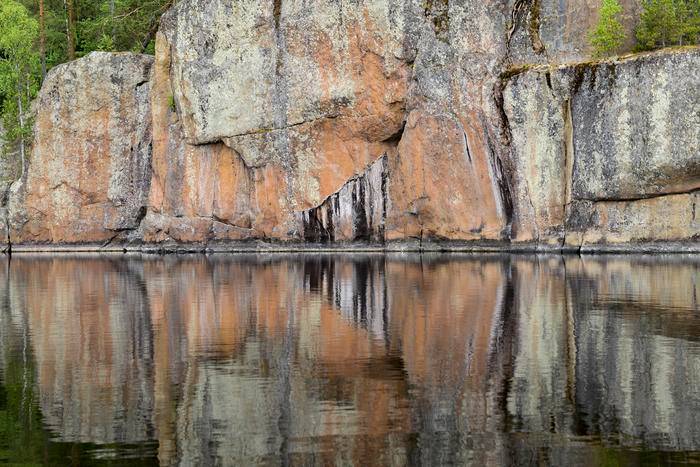Imagine standing by a Finnish lake 5,000 years ago, your voice bouncing back from ancient cliffs adorned with painted elks and human figures. New research reveals these prehistoric rock art sites weren’t just visual galleries – they were carefully chosen acoustic spaces where sound and art merged to create extraordinary sensory experiences.
Published in Sound Studies | Estimated reading time: 4 minutes
Finnish researchers have discovered that the smooth rock surfaces of these prehistoric art sites, dating from 5000-1500 BCE, possess unique acoustic properties that create distinct echoes, transforming ordinary sounds into something remarkable. These weren’t random locations – they were natural amphitheaters where sound and sight combined in ways that must have seemed magical to our ancestors.
“According to the psychoacoustic criterion used, the echoes are so strong that there is no reason to assume that the people in the past did not hear them,” explains archaeologist Riitta Rainio. The implications are fascinating – prehistoric visitors would have experienced their own voices seemingly emanating from behind the painted figures, creating an illusion of dialogue with the art itself.
The research team conducted their measurements under challenging conditions, using custom-designed recording equipment deployed from rafts or lake ice. Their findings revealed that these painted cliff faces generate precise single-repeat echoes that mirror sound with remarkable clarity – unlike nearby rougher rock surfaces or contemporary dwelling sites, which produce weak echoes or none at all.
This acoustic phenomenon wasn’t merely coincidental. The extremely smooth rock surfaces, polished by ancient glaciers and rising directly from the lakes, created perfect conditions for sound reflection. When prehistoric people approached these sites by water, they entered a unique sensory environment where reality seemed doubled – their calls echoing back with uncanny precision.
“Although the sounds produced by prehistoric people are beyond our reach, this study brings out one key feature of the sensory experiences associated with rock paintings by the water,” notes ethnomusicologist Julia Shpinitskaya. “Sound reflections strongly participated in the activities, making the cliffs energetic and active agents.”
The findings suggest these sites weren’t merely chosen for their visual appeal. The ability to communicate reciprocally with the physical environment may have been fundamental to why these particular cliffs were selected for painting and ritual offerings. It provides a rare glimpse into how our ancestors might have experienced these spaces – not as passive art galleries, but as dynamic environments where sound, sight, and spirituality converged.
Glossary
- Psychoacoustics
- The scientific study of sound perception and how humans interpret and experience different acoustic phenomena.
- Impulse Response
- A measurement that captures how sound waves interact with and reflect off surfaces in a particular space.
- Archaeoacoustics
- The study of sound in archaeological contexts, examining how ancient people experienced and used sound in various settings.
What makes these Finnish rock art sites acoustically special?
Their extremely smooth surfaces, polished by glaciers and rising directly from lakes, create distinct single-repeat echoes that accurately mirror sounds.
How did researchers gather acoustic data from these sites?
They used custom-designed recording equipment deployed from rafts or lake ice to measure the sound reflections.
What distinguishes the painted cliffs from nearby rock surfaces?
The painted cliffs generate precise, clear echoes, while adjacent rougher surfaces produce weaker echoes, and dwelling sites have no audible echoes.
Why might ancient people have chosen these specific locations?
The unique acoustic properties allowed them to interact with the environment in a special way, combining visual art with sound reflection for spiritual or ritual purposes.
Enjoy this story? Subscribe to our newsletter at scienceblog.substack.com
If our reporting has informed or inspired you, please consider making a donation. Every contribution, no matter the size, empowers us to continue delivering accurate, engaging, and trustworthy science and medical news. Independent journalism requires time, effort, and resources—your support ensures we can keep uncovering the stories that matter most to you.
Join us in making knowledge accessible and impactful. Thank you for standing with us!

